[ad_1]
Over the past four years, the United Nations International Children’s Fund has been investing in startups applying open-source technology, hoping to make the world a better place, but is looking to step up its game even further now.
Cecilia Chapiro, an investment advisor at UNICEF Ventures, told Cointelegraph that UNICEF had launched its innovation fund in 2016 with the goal to support emerging technologies being built in developing countries. Since then, UNICEF has invested in over 50 startups across 35 countries. “We invest in technologies that have the potential to influence billions of people, especially children in emerging countries,” Chapiro said.
According to Chapiro, UNICEF identified blockchain as one of the technologies that could make a global impact. As such, UNICEF invested $100,000 of equity-free funding through its innovation fund a year and a half ago into six startups, three of which were focused on blockchain.
To further understand blockchain technology’s impact, UNICEF launched a cryptocurrency fund supported by the Ethereum Foundation in October 2019. Chapiro explained that the crypto fund is based on the same framework as the innovation fund; the only difference is that investments are made in cryptocurrency. She said:
“UNICEF’s innovation fund allows companies to partake in a one-year portfolio experience. We provide non-financial benefits that go along with the investment. We look for companies with a prototype that can be reviewed and strengthened to benefit a large number of users. We support the companies in a number of ways, helping prepare them to speak with additional investors after the one-year program ends.”
Blockchain: An opportunity for humanitarian growth
On June 20, UNICEF’s crypto fund made its largest crypto investment to date, worth 125 ETH — around $28,600 at the time — in eight open-source technology companies. Immediately following this funding round, UNICEF announced that it will invest another $100,000 worth of both United States dollars and crypto in blockchain startups that leverage open-source technology to combat global challenges, especially those related to the COVID-19 pandemic.
Chapiro, who helped launch UNICEF’s crypto venture, explained that the fund has enabled the organization to seriously invest in blockchain startups. She said: “After investing in three blockchain companies over a year ago and then a few more just two weeks ago, UNICEF’s crypto fund has reached a new level of growth to accommodate the funding of about five to eight more open-source blockchain projects.”
According to Chapiro, UNICEF is looking to support early-stage startups with a blockchain prototype that can be transformed and eventually deployed in countries that need the technology the most. For example, during the last funding round, UNICEF invested in blockchain startup StaTwig, a company based in India that uses a blockchain to track the supply-chain of rice being delivered from the Indian government to low income areas.
Sid Chakravarthy, the founder and CEO of StaTwig, told Cointelegraph that India uses a Public Distribution System to deliver essential goods to individuals living under the poverty line. Chakravarthy explained that each state in India operates its own PDS, noting that COVID-19 has created an even higher demand for PDS products. He said:
“In Telangana State, where we are currently working, there are 28.3 million beneficiaries. These beneficiaries receive a lot of subsidized essentials, such as rice, dal, kerosene and sugar through this program. Rice is the most important product. It is procured from state farmers and traders, processed in rice mills, then transported to and stored at various warehouses and finally distributed to beneficiaries through fair price shops.”
While India’s PDS may seem effective in theory, there are a number of problems that need to be addressed. For instance, Chakravarthy noted that there is a lack of visibility into the inventory in India’s supply chains. A more transparent system could ensure that there are enough rice bags in each warehouse to meet the supply and demand of each state. In addition, transparency could provide higher quality products that are not exposed to harsh environmental conditions.
StaTwig has been leveraging blockchain to create a digital identity for every single product. “With rice, every bag gets a unique digital ID,” said Chakravarthy. Products are then tracked from the farmers, all the way to the beneficiaries. Data is recorded, showing each location where the bags have been, the chain of custody and the quality of the product.
UNICEF has also previously invested in Mexico-based startup OS City, which has been issuing blockchain-based government assets and running a pilot to deploy 1,000 blockchain IDs to allocate educational assets for children, such as diplomas. Jesús Cepeda, the founder of OS City, told Cointelegraph that the pilot is the first step toward enforcing blockchain citizen IDs, which will allow government assets to become fully digital, secure and transparent:
“We are solving the problem associated with the tampering of government records. We use blockchain as a tamper-proof, transparent method to allocate information. We are putting forth the funding from UNICEF to organize government records associated with an individual into a ‘wallet-like’ blockchain asset so that we can improve public institutions’ efficiency and trust.”
Crypto versus fiat investments
It’s important to point out that UNICEF’s funding for both StaTwig and OS City was made in Ether (ETH). Christina Rose Lomazzo, the blockchain lead at UNICEF, told Cointelegraph that most organizations that receive funding in crypto immediately convert it to fiat. However, UNICEF’s crypto fund had required the eight companies they previously invested in to keep the funds as cryptocurrency:
“This ensures that companies understand the benefits of cryptocurrency, such as the traceability aspect and speed of transactions versus those being done by traditional systems. These startups could also make use of the crypto by paying their employees with it.”
Chris Fabian, a senior advisor and co-lead of UNICEF Ventures, further stated in a press release that transferring the cryptocurrency funds to eight companies based in seven countries took less than 20 minutes. Additionally, UNICEF has been working on building a series of tools for its crypto fund that would allow the organizations to work more efficiently with cryptocurrencies. Lomazzo shared that the first tool being built is the crypto fund website, which is really just a simplified version of a block explorer. This would allow the general public to track funds while serving as an internal valuation tool.
Interestingly, the new round of funding will be dispersed in the form of both crypto and fiat, a first for UNICEF’s crypto fund. Lomazzo explained that the reason for this change is due to the fact that cryptocurrency is still not universally legal.
UNICEF’s primary focus is to invest in startups based in developing countries, like India, which still has restrictions when it comes to cryptocurrency adoption. Moreover, Lomazzo mentioned that UNICEF’s donors have provided funds in both crypto and fiat, allowing the organization to make use of both currencies.
Related: Indian Banks Act Slow to Accept Crypto Industry Despite RBI’s Approval
The importance of open-source
Moreover, while UNICEF’s crypto fund will invest up to $100,000 worth of USD and crypto in blockchain startups, another important element is that each company must leverage open-source technology. Brain Behlendorf, the executive director of the Hyperledger Foundation, told Cointelegraph that open-source licensing is essential for transforming software from a tool of control into a tool that could eventually benefit humanity:
“Traditional software approaches create a dependency by the user upon the tech provider, but open-source licensed software confers the freedom to use, modify and share for any purpose, not just those allowed or even envisioned by their original creators. For blockchain applications, this is a natural requirement for decentralization and trust that the system is doing what it should. This may be why the only meaningful blockchain frameworks are all open-source licensed.”
Chapiro further noted that since the fund doesn’t measure return on investment from financial gains, open-source technology is crucial to understand how useful the technology is in a variety of settings.
Challenges of investing in blockchain companies
Although UNICEF’s crypto fund aims to invest in a new batch of startups that could potentially change the world, this may be easier said than done. The biggest challenge, according to Chapiro, is finding blockchain companies based in emerging countries, which is a key requirement for the fund. Many blockchain projects are being developed in the U.S., Europe and Asia.
Additionally, Chapiro mentioned that UNICEF has been looking to invest in companies founded by women or minorities. Although this hasn’t been easy, Chapiro explained that 40% of the investments in UNICEF’s innovation fund have been made in women-led companies. She hopes this number will reach 50% by the end of 2020.
Surprisingly, COVID-19 hasn’t created many issues for UNICEF in terms of finding startups to invest in, as most of the processes have always been virtual. According to Chapiro, the only in-person experience is a week-long workshop in New York, which companies can join once they receive funding. Following COVID-19 spikes, this workshop has been made virtual. However, while COVID19 didn’t have much of an impact on the workings of UNICEF’s crypto fund, Chapiro explained that many of the startups have been affected:
“Many of the other funding programs these startups were a part of were discontinued or limited following COVID-19. This is why we are doing much quicker funding rounds now. We ended up investing in eight companies a few weeks ago, some of which we had previously funded. Now, there is an increasing demand for their services because many of them are solving COVID-19 related challenges.”
[ad_2]










